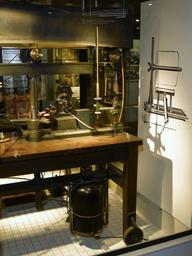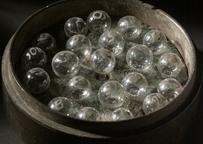

Tools and components used in rabbit ear chamber research
- Made:
- 1950-1980 in unknown place

Cardboard box containing tools and compononents used in Dr. PAG Monro's research to study blood flow and the deformation of red blood cells in living circulation with rabbit ear chambers. Including: 1 small piece of gauze, 25 brass fixings, 1 Perspex disc, 5 wooden discs and 1 rod, piece of red resin wrapped in paper, piece of aluminum foil, 2 metal rods, piece of copper sheet, hollow Perspex rod, 1 needle for a syringe, 1 double ended spatula, metal template with 6 holes. 1950-1980
Peter Alexander George Monro (1919-2005) was an anatomist, lecturer, and Fellow of St John's College, University of Cambridge. He invented and devised innovative methods of visualising blood flow in vivo (living) animals and found ways of measuring the velocity of red blood cells. Any experimental work including animals was and remains tightly controlled by the UK government's Home Office. Many of his devices and templates were made with the help of a technician at the London Hospital Medical School in Whitechapel, London.
Monro founded the British Microcirculation Society in 1963 and served as its Secretary for 20 years before becoming President.




